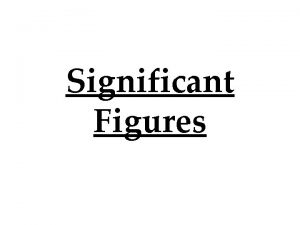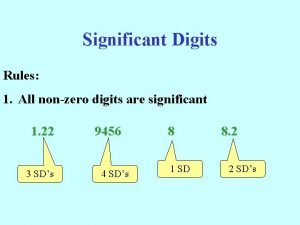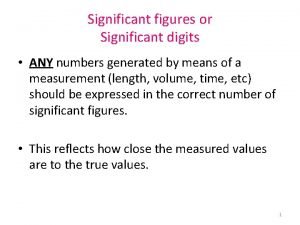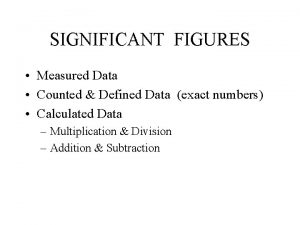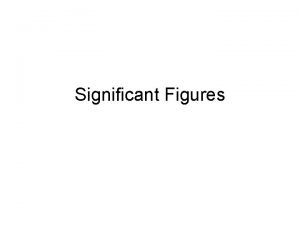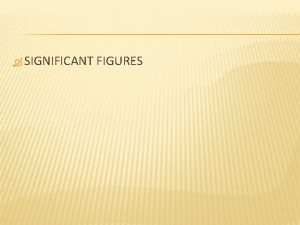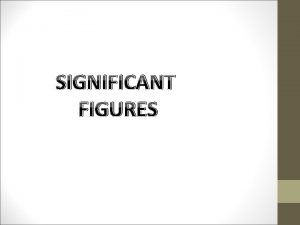Significant Figures Significant Figures Rules 1 ALL nonzero





- Slides: 5

Significant Figures

Significant Figures - Rules • 1) ALL non-zero numbers (1, 2, 3, 4, 5, 6, 7, 8, 9) are ALWAYS significant. • 2) ALL zeroes between non-zero numbers are ALWAYS significant. • 3) One or more additional zeros to the right of both the decimal place and another significant digit are significant. • 4) Zeros used solely for spacing the decimal point are not significant.

ADDITION AND SUBTRACTION: • When adding or subtracting numbers, count the NUMBER OF DECIMAL PLACES to determine the number of significant figures. • The answer cannot CONTAIN MORE PLACES AFTER THE DECIMAL POINT THAN THE SMALLEST NUMBER OF DECIMAL PLACES in the numbers being added or subtracted. • Example: • 23. 112233(6 places after the decimal point) • 1. 3324(4 places after the decimal point) + 0. 25 (2 places after the decimal point) = 24. 694633(on calculator) • 24. 69(rounded to 2 places in the answer) • Note: There are 4 significant figures in the answer.

MULTIPLICATION AND DIVISION: • When multiplying or dividing numbers, count the NUMBER OF SIGNIFICANT FIGURES. • The answer cannot CONTAIN MORE SIGNIFICANT FIGURES THAN THE NUMBER BEING MULTIPLIED OR DIVIDED with the LEAST NUMBER OF SIGNIFICANT FIGURES. Example: • 23. 123123(8 significant figures) x 1. 3344(5 significant figures)= 30. 855495(on calculator) • 30. 855(rounded to 5 significant figures)

IN THE LABORATORY: • Masses should always be recorded to as many places after the decimal point as are read off the balance. • 10 m. L Graduate cylinders should be read to the nearest. 01 m. L. • 25 m. L and 100 m. L graduate cylinders should be read to the nearest 0. 1 m. L.
